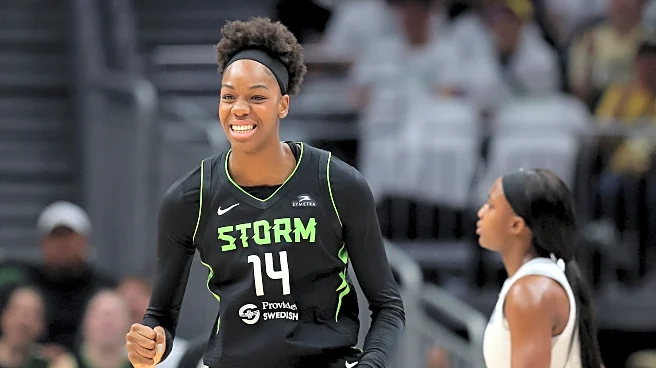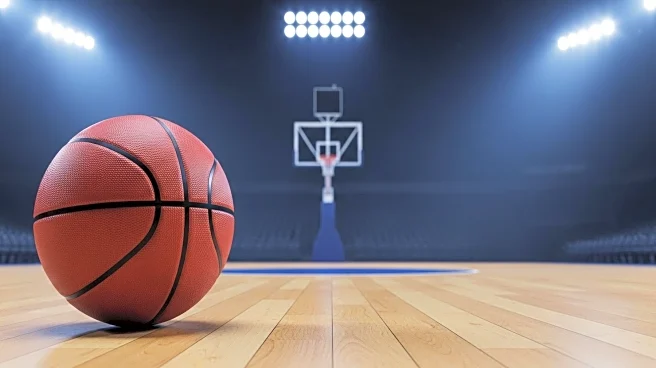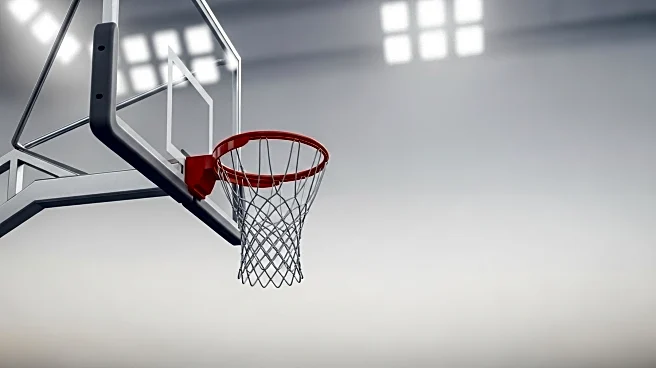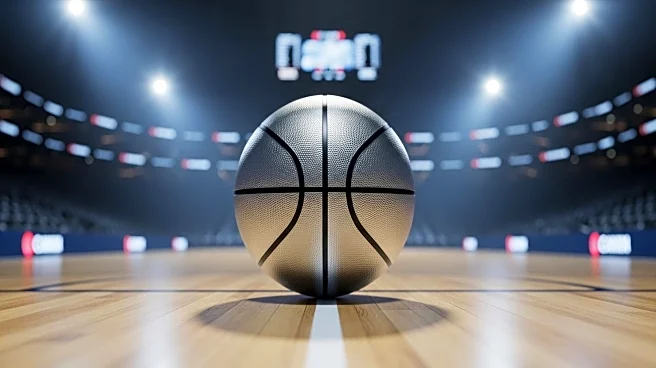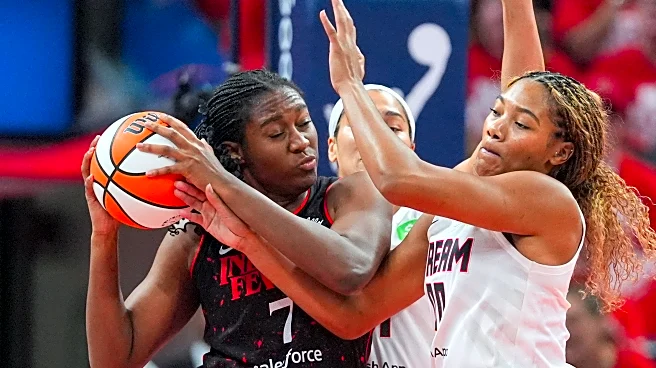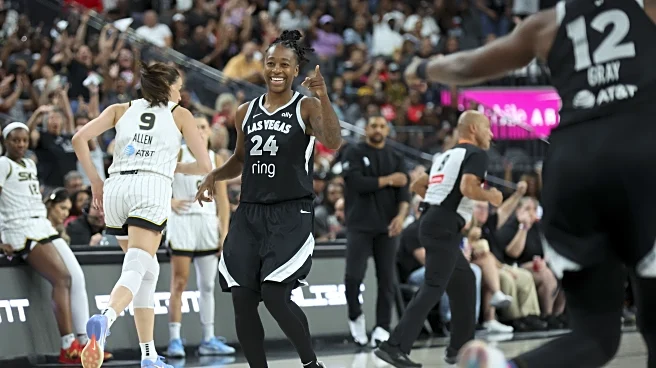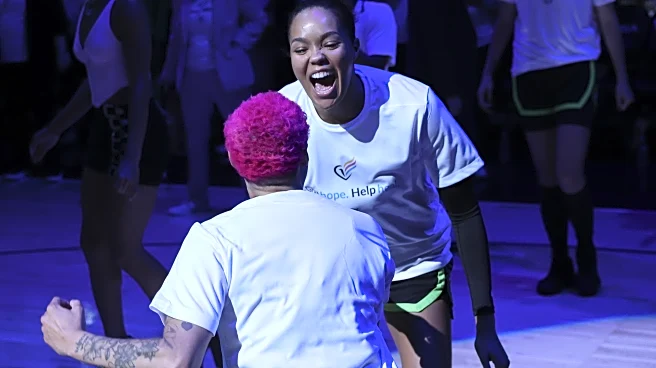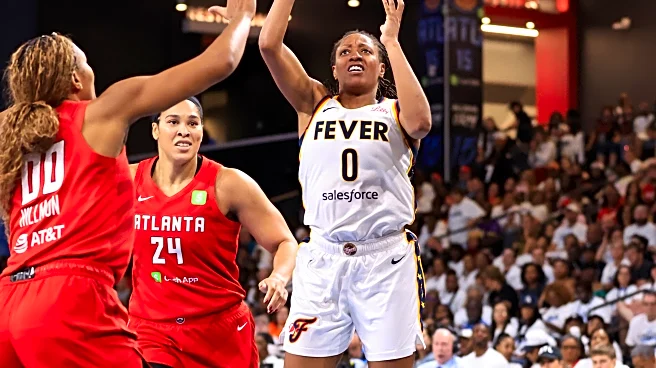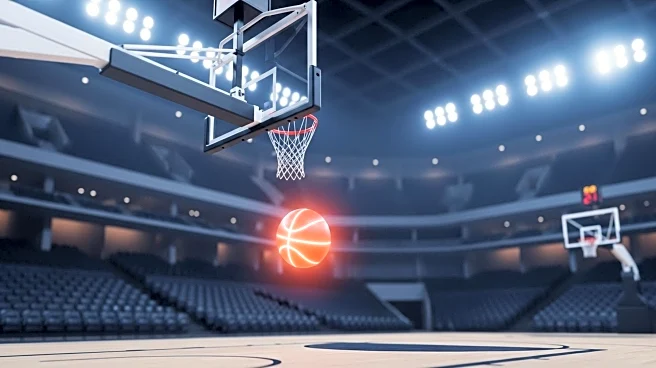The first year of the WNBA’s new first-round playoff format, where the lower-seeded team hosts Game 2, instantly has proven impactful, as the No. 6-seed Indiana Fever and No. 7-seed Seattle Storm harnessed their homecourt advantages to shake off poor Game 1 performances, prevail in Game 2 and force a pair of do-or-die Game 3s.
The pressure now resides on the No. 3-seed Atlanta Dream and No. 2-seed Las Vegas Aces, the higher-seeded Game 3 hosts looking to avoid the ignominy of a first-round upset.
Game 3 between the Dream and Fever tips off at 7:30 p.m. ET on Thursday, followed by Aces and Storm at 9:30 p.m. ET. Both games will be broadcast on ESPN2. Here’s what each team needs to do in order to survive and advance to the semifinals:
Atlanta Dream: Take more 3s

On September 5 against the Los Angeles Sparks, the Dream tied the then WNBA single-game record, swishing 19 3s. In Game 2 against the Fever, the Dream took only 19 3s, making just five.
Rhyne Howard, who lead the league in 3-point attempts (9.3) and 3-point makes (3.1) per game, has managed 14 total attempts and just four makes from behind the arc in the first round, including an 0-for-4 effort in Game 2. Allisha Gray, who took 6.1 3s per game, making 2.3, during the regular season, likewise has been limited from deep, going 2-for-9 from 3 across Games 1 and 2.
The 3-ball became central to Atlanta’s offensive brand, propelling them to the second-best offense in the league. After scoring almost 85 points per game in the regular season, the Dream have scratched an average of 70 in the first round, falling to a futile 60 points in Game 2.
Indiana deserves immense credit for containing the crux of Atlanta’s offense, preventing both Howard and Gray from getting off the deep balls that make the Dream offense go. Now, head coach Karl Smesko has to come up with a counter to help Howard and Gray get loose and reestablish the team’s top-notch offensive identity.
Indiana Fever: Maintain the margins

Shooting almost 43 percent from the field and better than 42 percent from 3 in Game 2 compared to less than 35 percent from the field and 13.3 percent from 3 in Game 1 certainly helped the Fever force a Game 3.
However, the Fever have to make sure they remain in the fight, even if their shots are not falling. In Game 1, Indiana not only was outrebounded, but also relented 18 second-chance points. In Game 2, the Fever dominated the glass by 10 boards, and allowed the Dream to muster just two second-chance points. Indiana also cut down Atlanta’s fastbreak points and points off turnovers in Game 2. Winning every category is a must for the undermanned Fever.
Even if the season-long stats suggest that Indiana is a higher-scoring team than Atlanta while the Dream had a stronger defense than the Fever, Indy is better suited to win ugly, dragging down the Atlanta offense, as they have successfully done, and capitalizing on every little advantage to scrap their way to an upset.
Las Vegas Aces: Get up the FGAs

An explosive offense fueled the Aces’ in-season turnaround. It also was behind their blowout win in Game 1.
Putting all those points on the board, of course, requires not only making shots, but taking them. And the taking was an issue for the Aces in Game 2. While they shot 50 percent from the field as a team, they attempted only 56 shots, less than their fewest attempts in a regular-season game. Their 19 3-point attempts also were nearly seven below than their regular-season average. Vegas did get to the line for 29 free throws, which partly, but not fully, explains their paltry number of field goal attempts.
Just as with Indiana, significant credit goes to the Seattle defense. The Aces, like Dream, now must counter, riding their homecourt advantage to run the Storm up and down the court in a higher-paced, offense-first game. Finding a team-wide offensive rhythm will be especially important if A’ja Wilson is limited. The MVP candidate fell on her elbow late in the third quarter and subsequently struggled with her shot, going 1-for-4 from the field and 3-for-7 from the free throw line after the fall.
Seattle Storm: More Malonga

It’s a stat that could become part of WNBA lore. With 6:04 remaining in the fourth quarter of Game 2, the Aces were up by 10 points and, according to ESPN Analytics, had a 97.5 percent chance of winning. Then, Dominique Malonga entered the game.
The 19-year-old rookie fueled the Storm’s finishing kick, hitting the game-tying layup, helping to hold Wilson scoreless down the stretch and saving Seattle’s season—at least for one more game. To go further, the Storm need more (and more) of Malonga.
It’s understandable that Seattle is wary to overextend their inexperienced rookie; she’s averaged less than 24 minutes in the first round. But, not maximizing Malonga is a bigger risk than asking too much of her. The Storm have outscored the Aces by one point during her minutes, making her the only Storm regular with a positive plus/minus. Her biggest statistical impact has come on the boards, where her absolute domination ends (32.6 defensive rebounding percentage) and extends (15.9 offensive rebounding percentage) possessions.
But above all, the way she can cause trouble for Wilson makes it inexcusable for the Storm not to choose to live or die with Dom. Yes, A’ja may very well teach the rook a few lessons. But Malonga, with her 6-foot-6 frame and fluid athleticism, could prove that her all her potential has already become reality.
Game information
No. 3-seed Atlanta Dream (1-1) vs. No. 6-seed Indiana Fever (1-1)
- When: Thursday, Sept. 18 at 7:30 p.m. ET
- Where: Gateway Center in College Park, GA
- How to watch: ESPN2
No. 2-seed Las Vegas Aces (1-1) vs. No. 7-seed Seattle Storm (1-1)
- When: Thursday, Sept. 18 at 9:30 p.m. ET
- Where: Michelob ULTRA Arena in Las Vegas, NV
- How to watch: ESPN2

